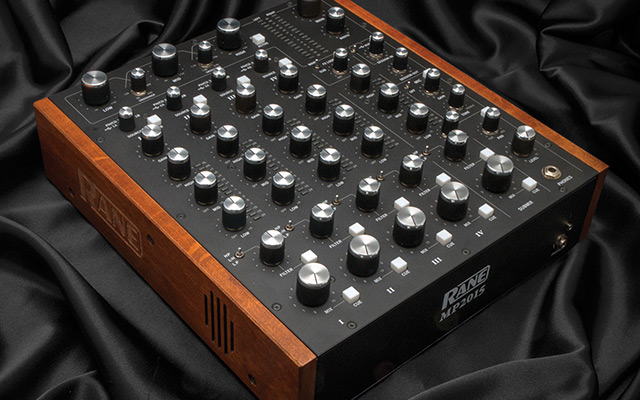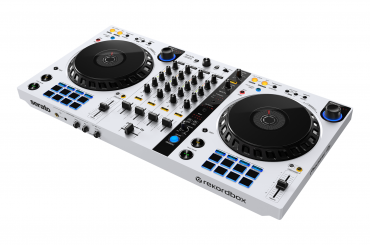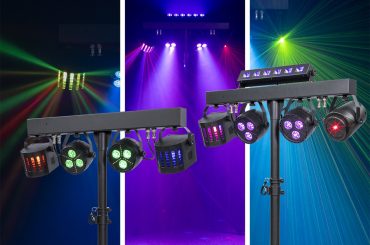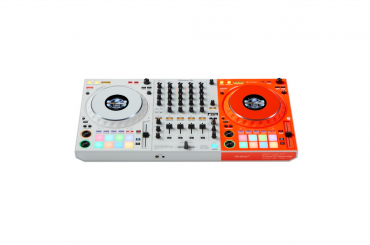With its MP2015 DJ mixer, Rane has hit one out of the park.
In drawing from a 40-year history of rotary mixers and creating in collaboration with an all-star cast of DJs—Doc Martin, Derrick Carter, Mark Farina and more—Rane has given us a mixer that is a sheer joy to use, straight out of the box.
Aimed at audiophiles, techno DJs and house jocks—there is no crossfader for turntablists who like to cut and scratch—the MP2015 is the latest baby sprung from a long lineage of esteemed rotary club mixers: Bozak’s CMA-10-2DL, first introduced 1971; UREI’s 1620, introduced in 1982; and Rane’s own MP2016 and XP2016, introduced in 1999. And now, we have the aptly named MP2015.
Aesthetics/Build Quality: Compact and brutishly feature-comprehensive, the MP2015 is a beauty to behold, with laser-etched wood side paneling, lustrous aluminum knob caps, sturdy metal switches, chunky, illuminated push-buttons, and recessed level meters, each featuring 16 individual segments.
At just 12.6 pounds, the MP2015 is lighter than most of its analog mixer counterparts, yet it maintains a familiar footprint—14-inches high by 13.1-inches wide by 4.3-inches deep—making it portable and easy to integrate into existing DJ setups and club installations.
The MP2015 is designed to last a lifetime. Rane made the clever decision to print the non-illuminated indicator labels on the reverse side of a Lexan plastic overlay, which will prevent any rubbing off of the white-on-black labels as time progresses. According to Rane, the Lexan front panel is designed to prevent glare and to enhance readability in low-light conditions due to its matte-black surface.
But are these labels as easy to see in the dark as LED indicators? Shortly after Rane announced the MP2015, I was lucky enough to catch Doc Martin rocking one while performing at Output nightclub’s Panther Room in Brooklyn. That night I noticed Martin was using a gooseneck lamp to illuminate his mixer, so once my own review unit arrived, I knew I had to experiment in my studio to see if I could easily see the MP2015 in the dark.
As it turns out, standard LED indicator lights are far easier to see in low-light conditions. In Rane’s defense, LEDs will burn out over time and prove expensive and difficult to replace, making the printed indicator labels a more durable choice, even if an accessory lamp is required in some situations.
Sound Quality: The most concise description I can give the MP2015’s sound is “faux analog.” It’s an incredibly high-quality digital wolf wearing analog sheep’s clothing.
How so? Well, the MP2015 is designed for playback of high-resolution audio produced from 24-bit studio master sources, supporting sample rates of 44.1, 48, or 96 kHz in both inputs and outputs. With 113 to 116dB of signal headroom line-to-line (or 128dB using digital S/PDIF ins and outs), the mixer’s dynamic range is ideal for DJs that prefer playing uncompressed WAV, FLAC or ALAC files. And with a nearly non-existent noise floor, it’s one of the best-sounding DJ mixers I’ve ever heard.
If you suspect I’m being hyperbolic, try routing the mixer—carefully, with no audio sources running into it—into a sound system, and then crank the gain and channel knobs all the way up. You’ll hear none of the telltale hissing that most mixers output; instead, silence.
Audiophiles, take note: the MP2015 features Audio 4 Pro delta-sigma modulator converters (for encoding analog signals into digital signals, and vice versa) manufactured by Asahi Kasei Microdevices (AKM) that meet the highest sound-quality standards of professional recording studios. The balanced, differential input converters are designed to minimize group delay and enhance linear phase response, and the output converters feature AKM’s proprietary digital filter, designed to decrease distortion.
(continued on next page)








